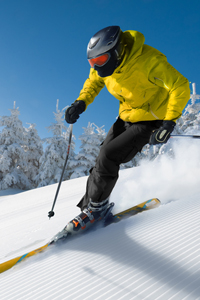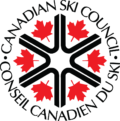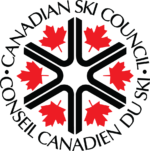What is Skiing?

Alpine skiing began as a club sport in 1861 at Kiandra in Australia and a number of similar clubs in North America and the Swiss Alps. Today, most alpine skiing occurs at a ski resort with ski lifts that transport skiers up the mountain. The snow is groomed, avalanches are controlled and trees are cut to create trails. Many resorts also include snow making equipment to provide skiing when the weather would otherwise not allow it. Alternatively, alpine skiers may pursue the sport in less controlled environments; this practice is variously referred to as ski touring, backcountry skiing, or extreme skiing.
In competitive alpine skiing races four disciplines exist: slalom, giant slalom, super giant slalom, and downhill. Slalom ski races have courses that require short tight turns, whereas giant-slalom races have courses which are set with more widely spaced turns. Super-giant slalom and downhill have few turns, the courses have gates spaced widely apart and skiers often reach 100 km/h.
Types of Skiing?
Recreational Skiing
The majority of people who ski every year are recreational skiers. If you like to get out, ride the lifts and make a few turns at the local resort or on vacation a few times a year, you are a recreational skier. The whole idea when it comes to your skis is finding boards that make the experience more fun so that you can enjoy those precious days on the hill. You are in luck, recreational skier. New innovations in ski shapes and technology mean that it is far easier to ski than ever before. If you have not skied in a long time, you will soon learn that skis these days are shorter and feature more aggressive sidecuts (the difference between the width of the ski at the tip and waist), making it far easier to turn them. Recreational skis are built mostly to handle groomed runs, but that doesn’t mean you can’t push yourself and learn to ski bumps, trees and even powder on a good pair of recreational boards. Furthermore, rentals and demos have improved as well, making it easier for you to try out quality equipment at the resort to make a better decision about what ski is right for you.
Content courtesy of SnowSports Industries America | SIA and Snowlink.com
Freestyle Skiing
Freestyle Skiing is a form of skiing which originally encompassed two disciplines: aerials, and moguls. Besides those freestyle skiing now consists of skicross, half-pipe and slope style. Freeskiing is an Olympic discipline which shares characteristics with street skateboarding, BMX, and inline skating.
Currently there are two main branches of freestyle skiing: one encompassing the more traditional events of moguls and aerials, and a newer branch often called new school, comprising events such as halfpipe, big air, slopestyle, and big mountain or free-skiing. New school skiing has grown so much that new ski companies were created, companies that strictly make twin-tip skis — skis that are designed for taking off and landing “fakie”, or “switch” (backwards) on jumps and rails.
Back Country
Skiing in the backcountry on un groomed and unmarked slopes or pistes, including skiing in unmarked or unpatrolled areas either inside or outside of a ski resort’s boundaries, sometimes in the woods. Unlike groomed cross-country and alpine skiing, the land and the snow pack are not monitored, patrolled, or maintained.


